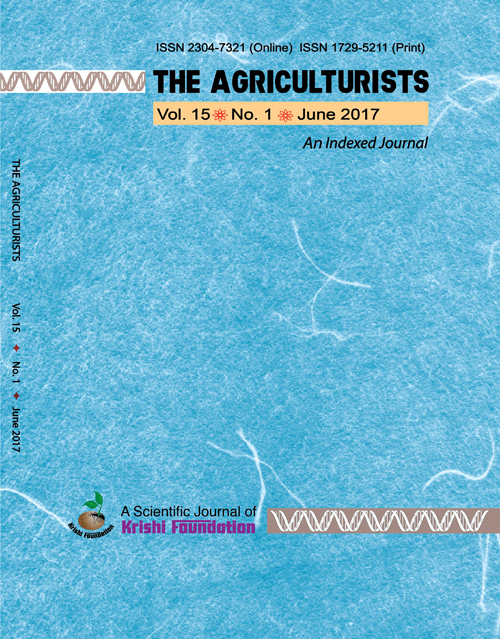Effect of Tillage Practices and Rice Straw Management on Soil Environment and Carbon Dioxide Emission
DOI:
https://doi.org/10.3329/agric.v15i1.33436Keywords:
CO2 emission, tillage, rice straw, field capacity, permanent wilting point.Abstract
Carbon (C) inputs and tillage intensity impinge on C degradation and thus CO2 emission and soil properties get influenced. Information on CO2 emission and soil properties under different tillage practices and straw application in rice based cropping system in Bangladesh is lacking. The effects of rice straw and tillage operations on CO2 emission and soil properties were quantified in four consecutive seasons of transplanted Aman and Boro rice grown under two tillage operations (minimum and traditional) and three levels of rice straw (control, incorporation and mulch) during 2010 to 2012. Irrespective of tillage practices, CO2 emission peak reached after 3-4 weeks of straw application. Carbon dioxide emission ranged from 26 to 59 kg ha-1 day-1 under minimum tillage and 25 to 96 kg ha-1 day-1 under traditional tillage. Minimum tillage accumulated more C in soil, which could be attributed to lower rates of emission and straw degradation. Carbon degradation rate constants, k were 0.000300 and 0.000394 (day-1) under minimum and traditional tillage, respectively. Small increment in soil C might help reducing CO2 in the atmosphere. Mineralization of straw increased nutrient contents and thereby improved the soil fertility and availability to the crops for nutrients uptake. Traditional tillage significantly reduced soil bulk density and increased field capacity of the soil, whereas in addition, rice straw application furthermore increased permanent wilting point and available water content in the soil. The present study may help in identifying suitable tillage and residue management options in reducing CO2 emission from rice fields.
The Agriculturists 2017; 15(1) 127-142
Downloads
147
167

